Article written by Elisa - Travel Writer & Local in France
This article may contain compensated links. Please read disclaimer for more info.
The traboules are hidden gems of Lyon, a world apart from the hustle and bustle of the city. In Lyon, traboules are narrow passageways cut through houses and private courtyards.
The word traboule comes from the Latin “trans ambulare,” which means “to walk through.”
Exploring the traboules is one of the best things to do in Lyon. There are around 400 of these small pathways in the city, with 40 of them open to visitors.
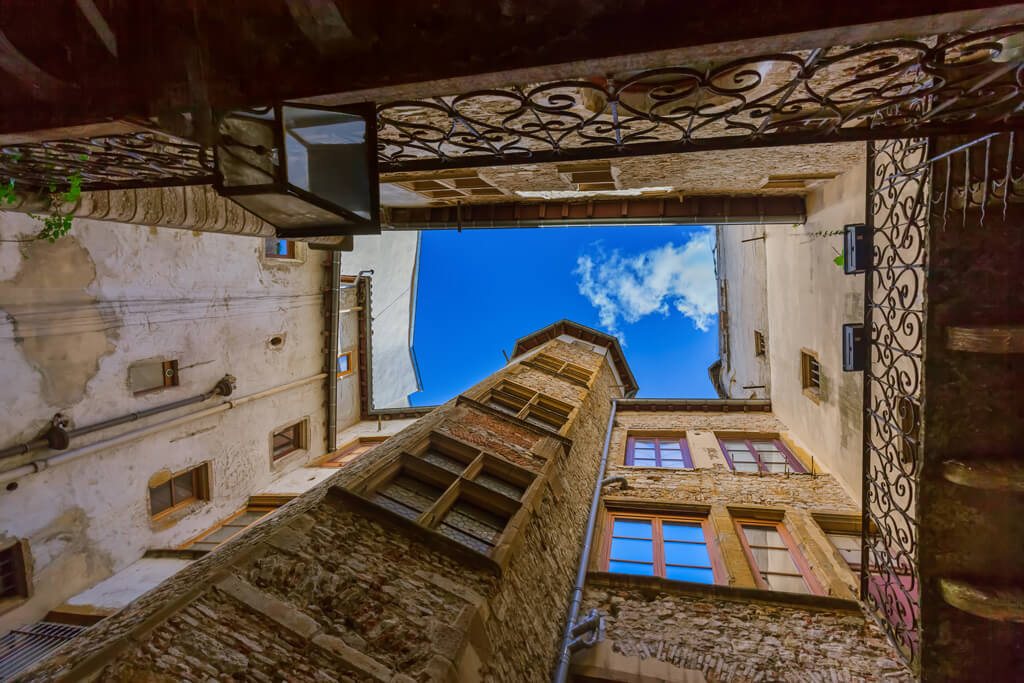
Are you planning a Lyon trip last minute?
Below are some of the best Lyon tours, hotels, and more!
- Check out this Lyon transportation guide
- Book your flight to Lyon (LYS)
- Book your transer airport-city with Welcome Pickups
- Book your train to Lyon
Top Experiences and Tours in Lyon
- Lyon City Pass for 1 to 4 days
- Lyon Guided Sightseeing Cruise – Admire Lyon from another perspective
- Lyon Hop-on Hop-off Bus Tour – A great way to see the capital of Auvergne
- Lyon E-bike Guided Tour – With a local for a superb experience
Top Lyon Accommodation and Lodging
Villa Florentine (top suggestion), Hotel Le Lumière (budget), MiHotel Sala (mid-range), Intercontinental Lyon-Hotel Dieux (luxury), Hotel de l’Abbaye (luxury). Check out the full list of our favorite hotels in Lyon
Don’t forget your travel insurance!
HeyMondo offers travelers insurance that combines medical and travel-related coverage for single trips (leisure and business trips), annual multi-trip, and extended stays (with COVID-19 coverage included). Use this link to get a 5% off.
Best Way to Visit the Traboules in Lyon
The best way to visit the traboules of Lyon and learn about their history is with a local licensed guide. There is no Lyon traboules walking tour, but this Lyon Old District walking tour can be tailored to your interests, so you can ask to focus on the traboules (which are already included in the standard itinerary).
This Lyon highlights & secrets walking tour also visits a couple of traboules in Old Lyon.
These audio-guided walking tours cover the main highlights in Vieux-Lyon and Croix-Rousse neighborhoods and can be downloaded onto your smartphone.
If you prefer to explore the traboules of Lyon without the help of a guide, go on reading for the best traboules Lyon has to offer.
About the Traboules of Lyon

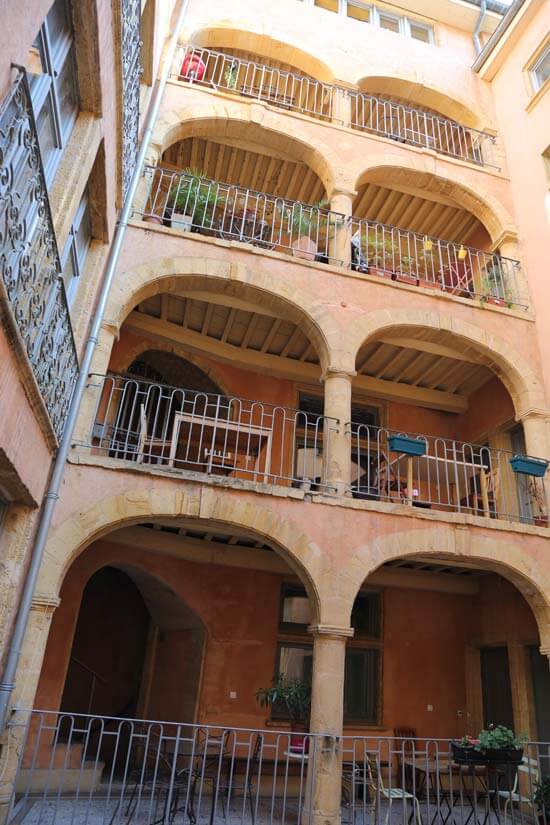
The traboules in Lyon are older than you may think; their origin can be traced back to the 4th century! After the fall of the Roman Empire, the aqueducts bringing water to Lyon started to fall, and the city built the first traboules to allow its inhabitants quicker access to the Old Town from the river.
In Lyon, there are many narrow passages, but not all of them are traboules. Here are the main characteristics of the traboules, Lyon’s unique attraction:
- It is a path reserved for pedestrians, and it crosses one or more buildings
- It connects one street to another
- In a traboule, there’s always an inner courtyard to provide the buildings and the passage with natural light
- There’s also a staircase that serves two or more buildings (usually through galleries)
Later in the 19th century, when Lyon became a major center for the silk trade, the traboules allowed the canuts (the name given to the silk traders in Lyon) to easily move their goods from the places of production to the markets located in the city center. Because most of the traboules were covered, they also protected the bolts of precious silk from rain, allowing goods transportation even in inclement weather.
Thanks to their usefulness in the daily life of the people of Lyon, traboules became over the years a characteristic feature of Lyon’s town planning from the Renaissance until the 19th century. Their integration into the city’s urban planning was even planned from the construction of the building.
Because of their secret nature, some of these traboules were the landmarks of the Canut Revolts, the major revolts that occurred between 1831 and 1848. They were among the first well-defined worker uprisings of the period known as the “Industrial Revolution.”
In the 20th century, during the Second World War, the traboules in Lyon were used by the resistance fighting against occupying German forces.
Best Traboules to Visit in Lyon
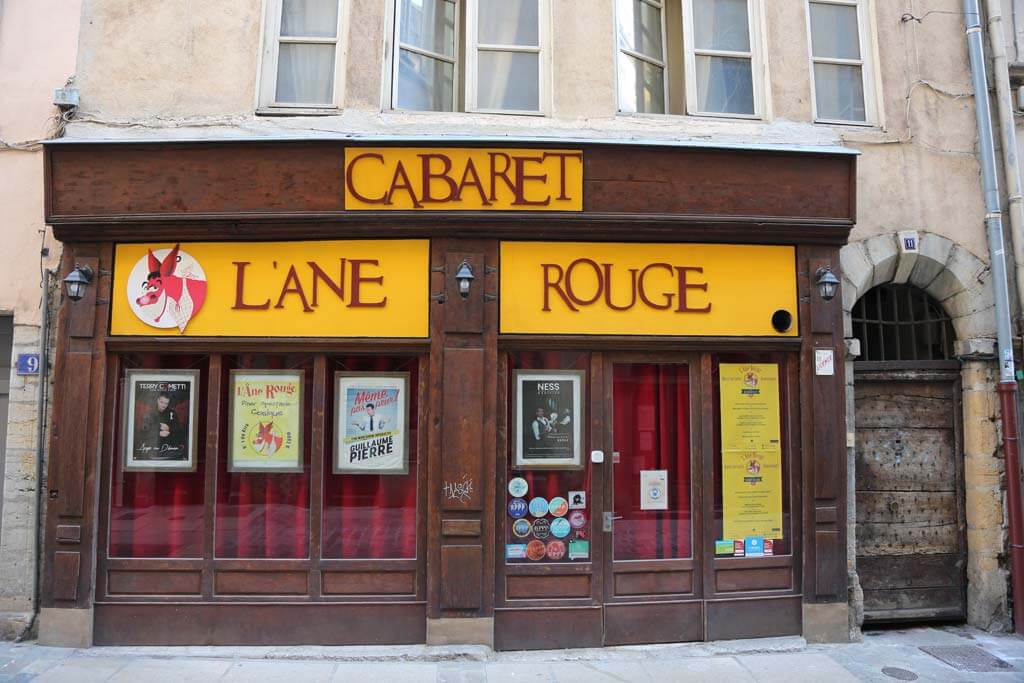
The traboules are secret passages, often hidden behind magnificent Renaissance doors. Even today, only a true Lyonnais has a good knowledge about Lyon’s traboules, so you can take your traboules exploration as a kind of treasure hunt.
Today, the most beautiful traboules are located in Vieux-Lyon and the Croix-Rousse neighborhoods. Originally, there were many traboules in the Presqu’Ile too, but the major urban planning works carried out in this sector in the 19th century caused the disappearance of the weaving workshops, a large part of the old buildings… and part of the traboules.
The traboules are private passages, usually linked to the courtyard of a residential building. Since 1990, an agreement between the City Council and the residents of properties with traboules allows access to everybody from morning to evening in exchange for maintenance, restoration, and lightning. Most of the traboules open to the public are marked on the exterior façade, and they have informative panels in French and English highlighting their history and architectural features.
If you prefer to visit the traboules alone rather than with a Lyon traboules guided tour, here is the list of the most beautiful traboules Lyon has to offer. There are many traboules, so if you are only spending a weekend in Lyon, it’s better to concentrate your explorations around the traboules of Vieux-Lyon. Remember that the traboules are part of residential areas, so please respect the tranquility of its inhabitants. Enjoy!
TIP: Lyon’s Tourism Office at Place Bellecour has free maps with the traboules open for visitors. In the summer, you can find their staff hanging around Old Lyon, offering these free maps to tourists.
TRABOULES VIEUX-LYON
- 3 Rue des Antonins to 68 Rue Saint-Jean
- 7 Rue du Bœuf to 34 Rue Saint-Jean
- 27 Rue du Bœuf to 54 Rue Saint-Jean
- 31 Rue du Bœuf to 14-10 rue de la Bombarde
- 2 Place du Gouvernement to 10 Quai Romain Rolland
- 5 Rue Juiverie to 3 Place Saint-Paul
- 5 Place Neuve Saint-Jean to 40 Rue Saint-Jean
- 7 Rue Saint-Jean to 7 Quai Romain-Rolland
- 19 Rue Saint-Jean to 2 Rue des Trois Maries
- 27 Rue Saint-Jean to 6 Rue de Trois Maries
- 1 Rue des Trois Maries to 14 Quai Romain Rolland
- 9 Rue des Trois Maries to 17 Quai Romain Rolland
- 2 Place du Petit Collège to 10 Rue Saint-Jean
TRABOULES CROIX-ROUSSE
- 3 Rue des Antonins to 68 Rue Saint-Jean
- 7 Rue du Bœuf to 34 rue Saint-Jean
- 27 Rue du Bœuf to 54 Rue Saint-Jean
- 31 Rue du Bœuf to 14-10 Rue de la Bombarde
- 2 Place du Gouvernement to 10 Quai Romain Rolland
- 5 Rue Juiverie to 3 Place Saint-Paul
- 5 Place Neuve Saint-Jean to 40 Rue Saint-Jean
- 7 Rue Saint-Jean to 7 Quai Romain-Rolland
- 19 Rue Saint-Jean to 2 Rue des Trois Maries
- 27 Rue Saint-Jean to 6 Rue de Trois Maries
- 1 Rue des Trois Maries to 14 Quai Romain Rolland
- 9 Rue des Trois Maries to 17 Quai Romain Rolland
- 2 Place du Petit Collège to 10 Rue Saint-Jean
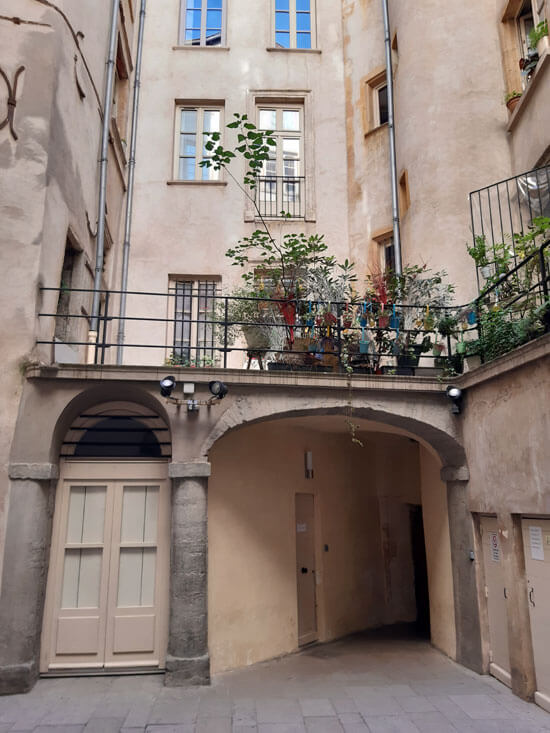
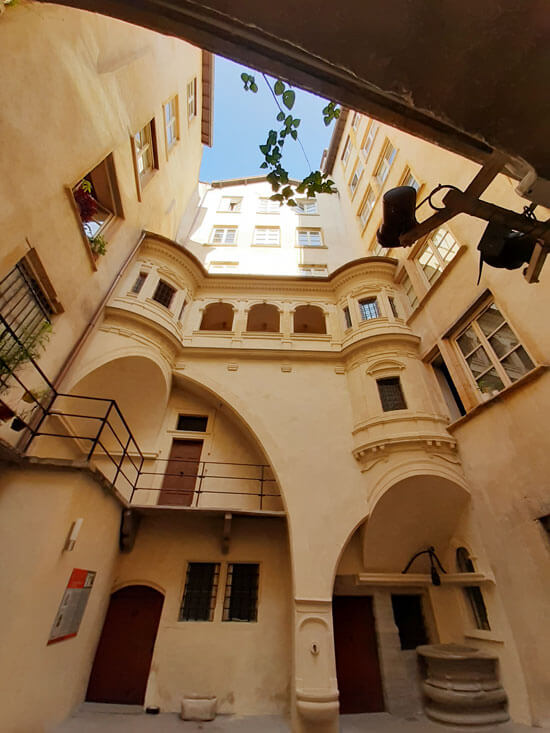
TRABOULES PRESQU’IILE
- 33-35-37 Rue Auguste-Comte to 21-23-25 Rue des Remparts-d’Ainay
- Rue des Trois Passages to 5 place Gailleton
- 15 Rue Victor-Hugo to 16 Rue Auguste Comte
- 37 Place Bellecour Presqu’Ile to 1 Rue du Plat
- 2 Rue Charles-Dullin to 1 Rue Gaspard-André
- 5 Rue Confort to 3 Rue David Girin
- 56 Rue Mercière to 26 quai Saint-Antoine (passage des imprimeurs)
- 82 Rue Président Edouard Herriot to 45 rue de Brest
- 1 Rue Constantine, 2 Rue d’Algérie, 3 Rue d’Oran to 1 Quai de la Pêcherie
Traboules and Bouchons in Vieux Lyon
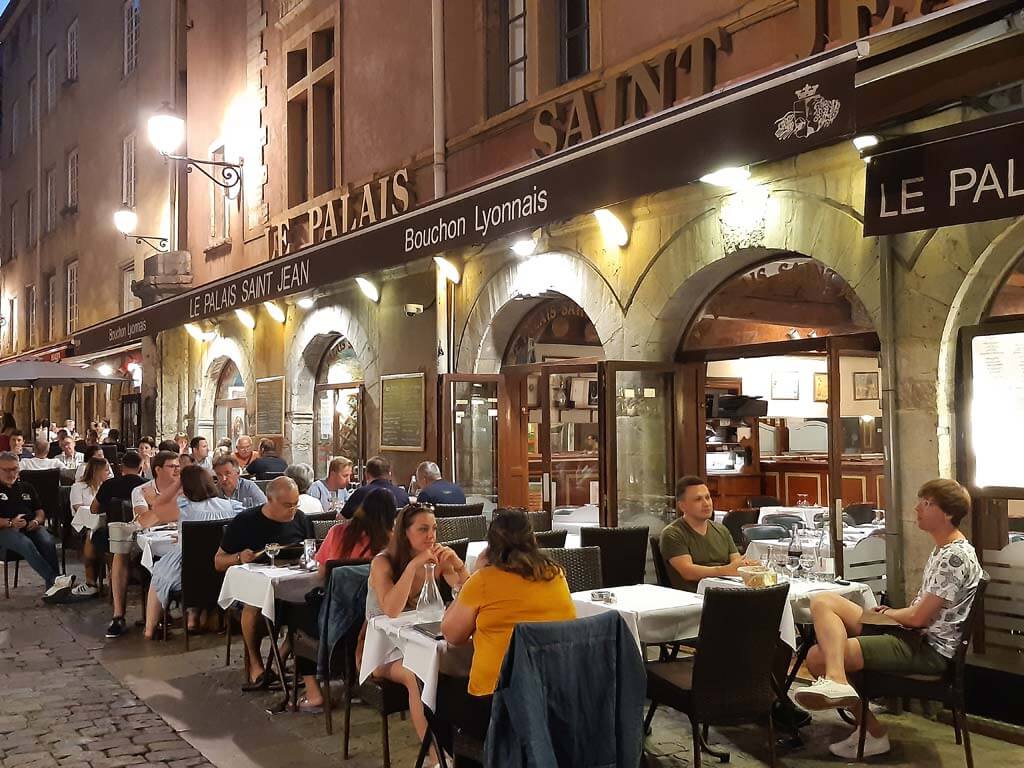
If you are exploring the traboules IN Vieux-Lyon, chances are that you are not far from a bouchon Lyonnais. The bouchons are Lyon’s local eateries, usually popular and cheap places offering traditional food. Highly enhanced and promoted by the City Council, the bouchons have become trendy places perfect for a casual lunch or dinner in the Old Town.
Even if they have lost a bit of their popular character, the bouchons’ menu hasn’t changed, with typical dishes of the region like the tablier de sapron, quenelles (kind of dumplings), Lyonnaise salad, and canut’s brain. Everything is generally served copiously and washed down with a glass of Beaujolais or Côtes-du-Rhône.
To learn more about food in Lyon, try this Lyon Old Town Food Tour with a local guide, which explores the Old Town from a gourmet’s perspective, combining cultural discovery and local flavors.
